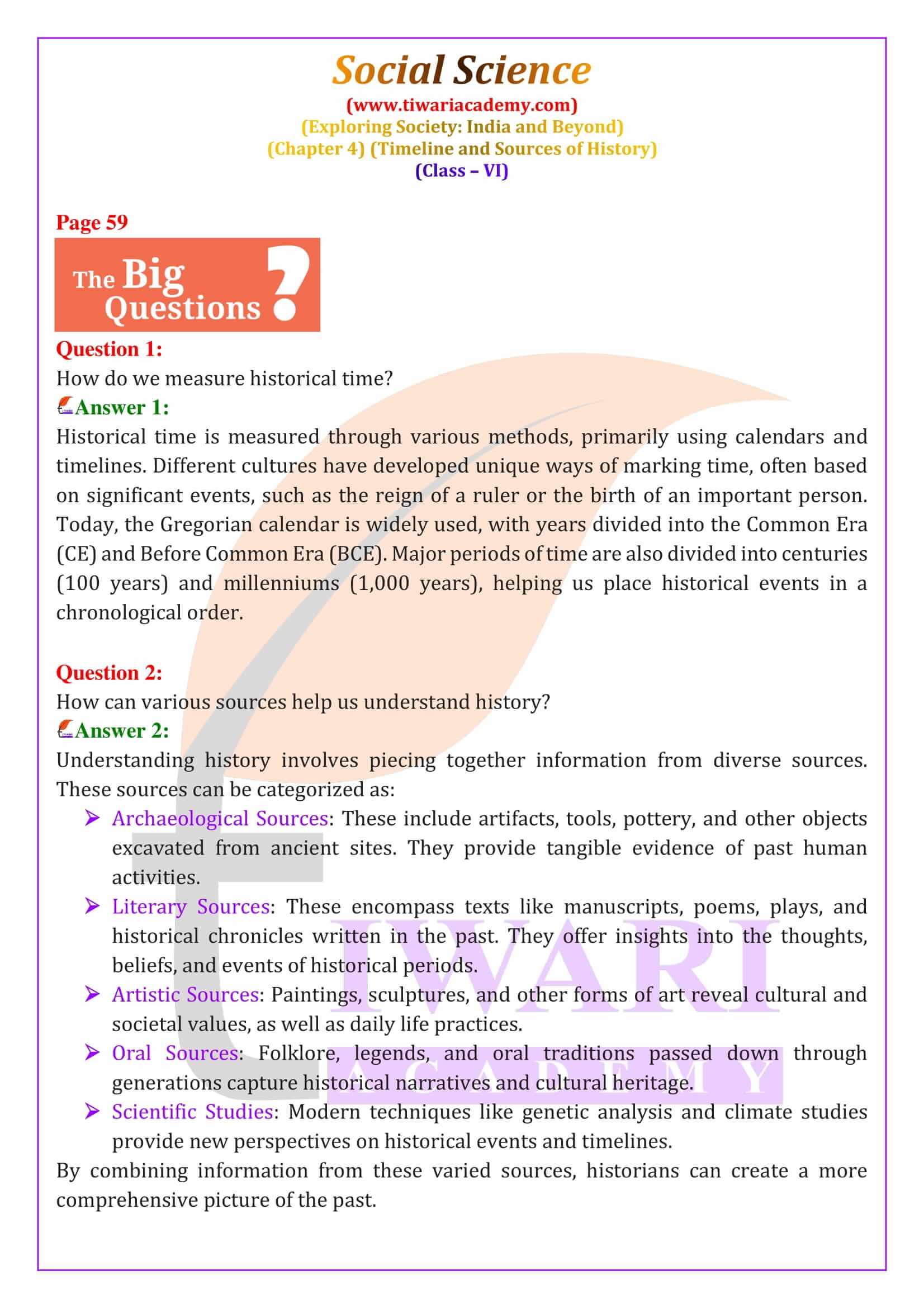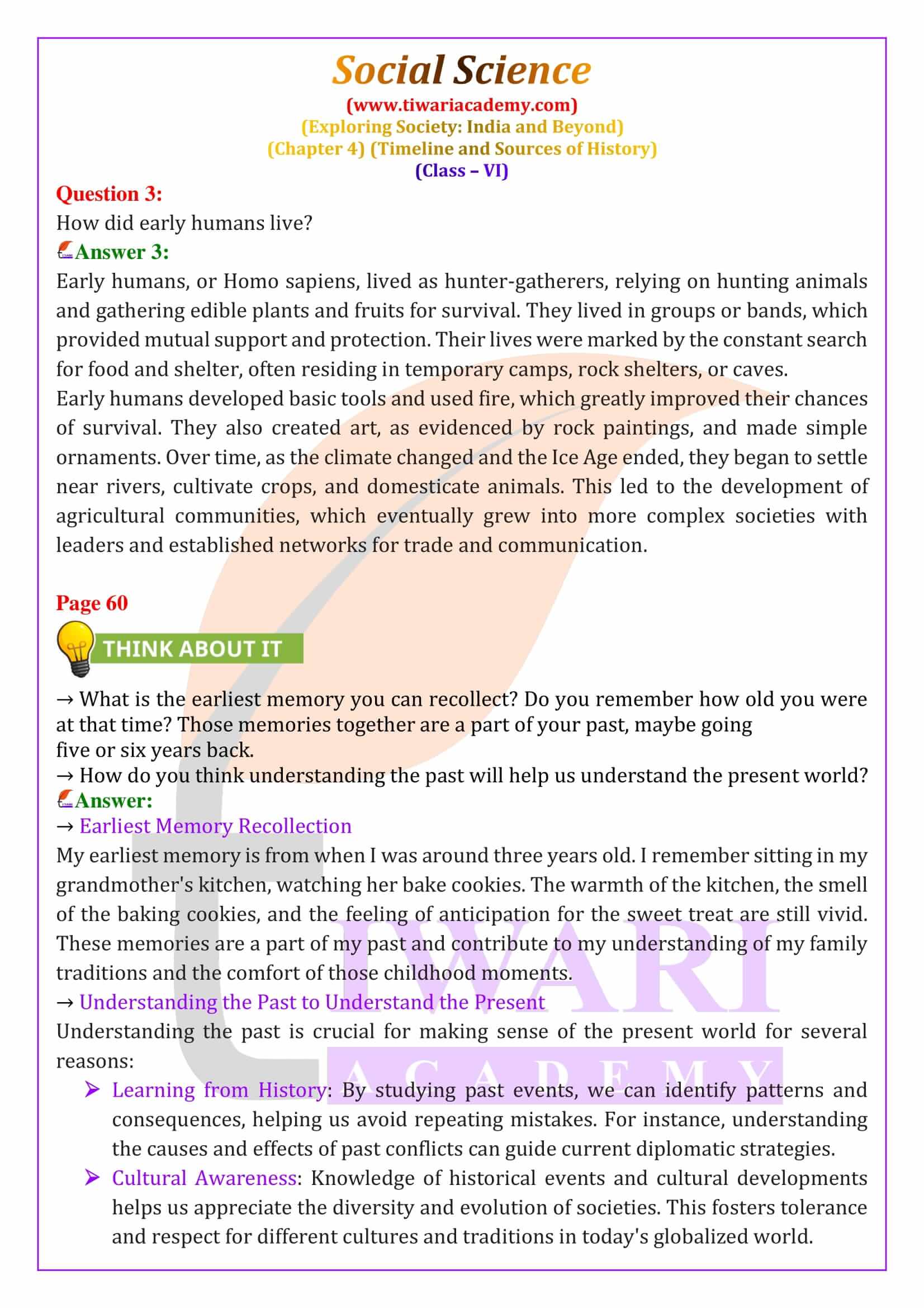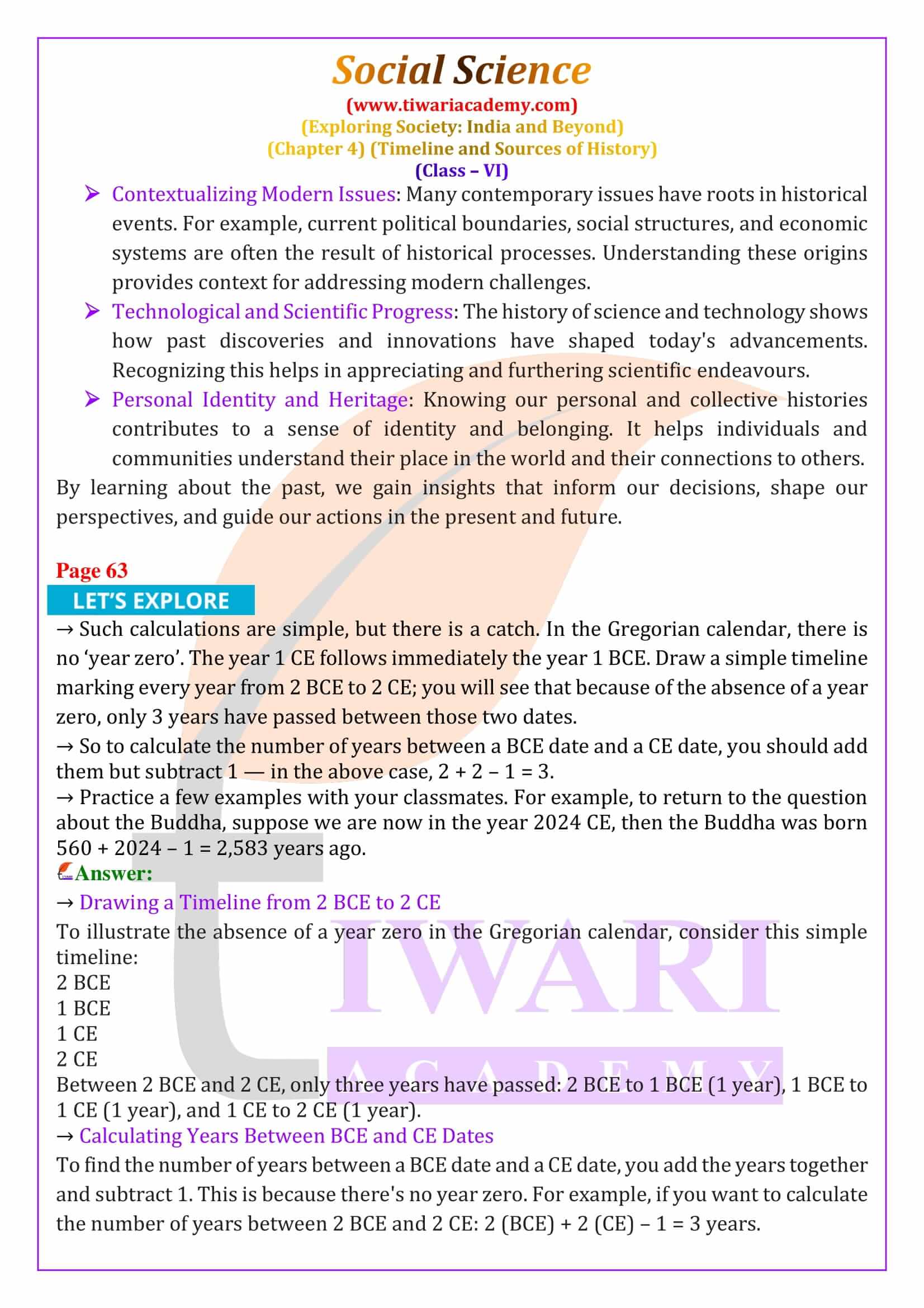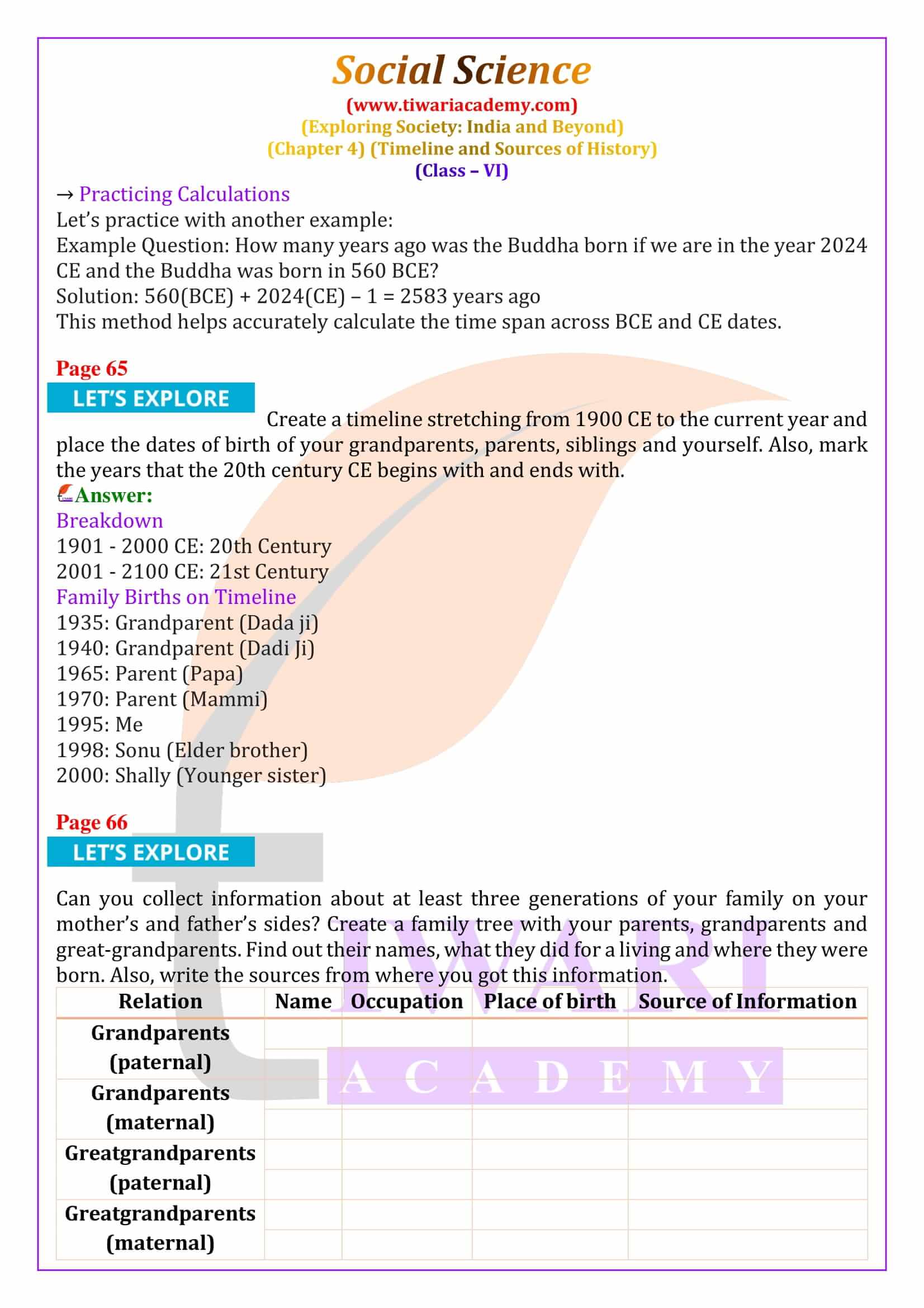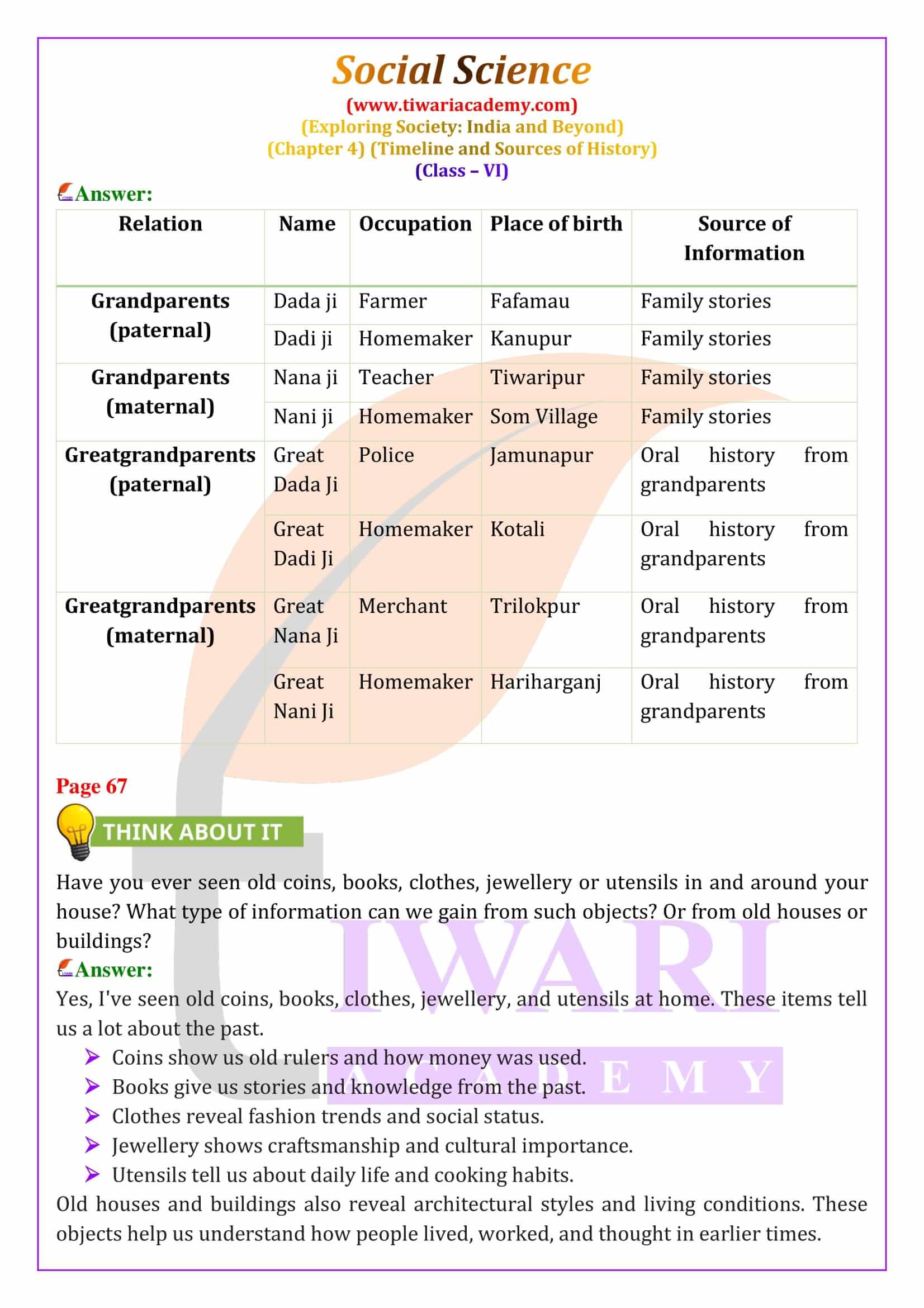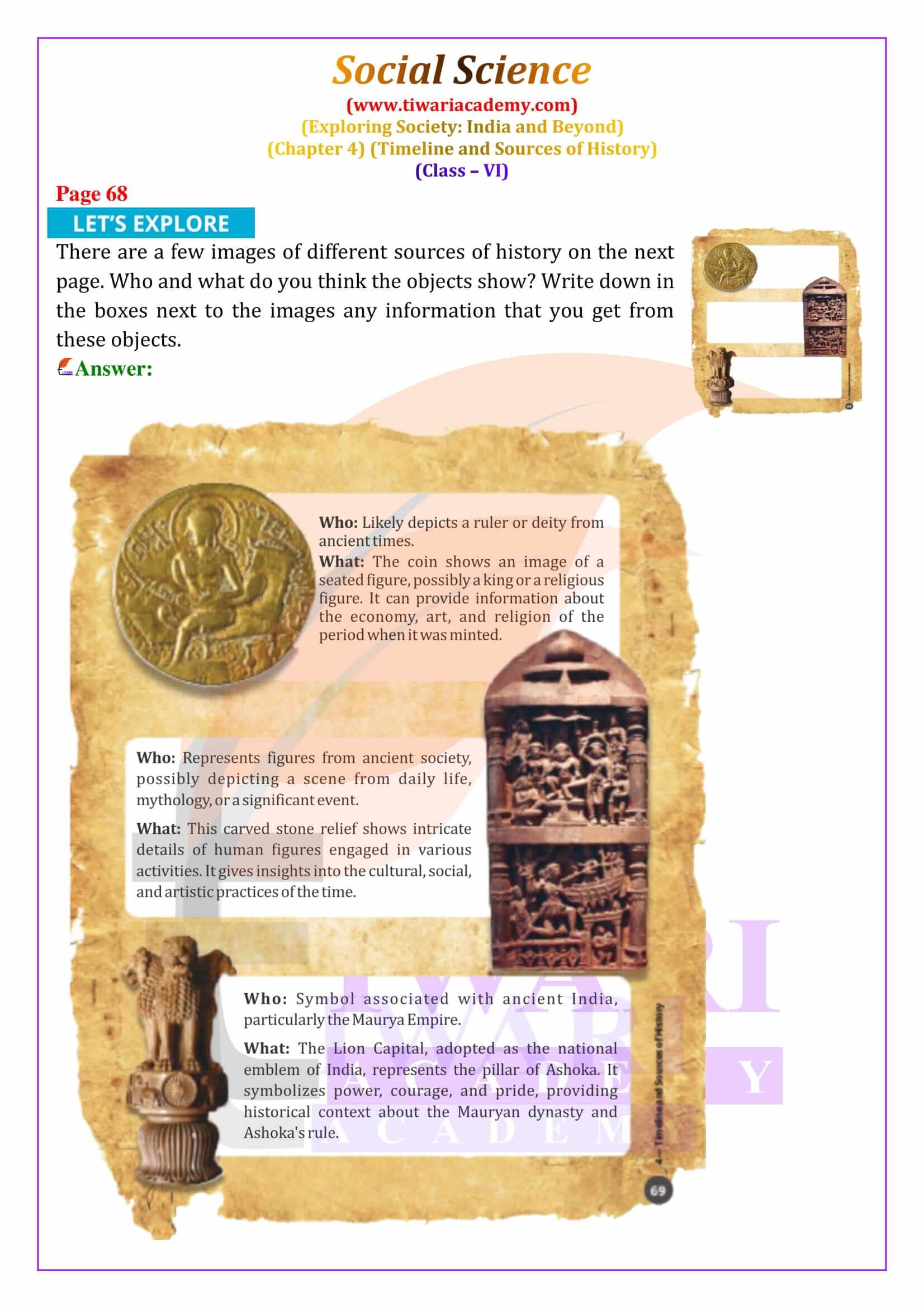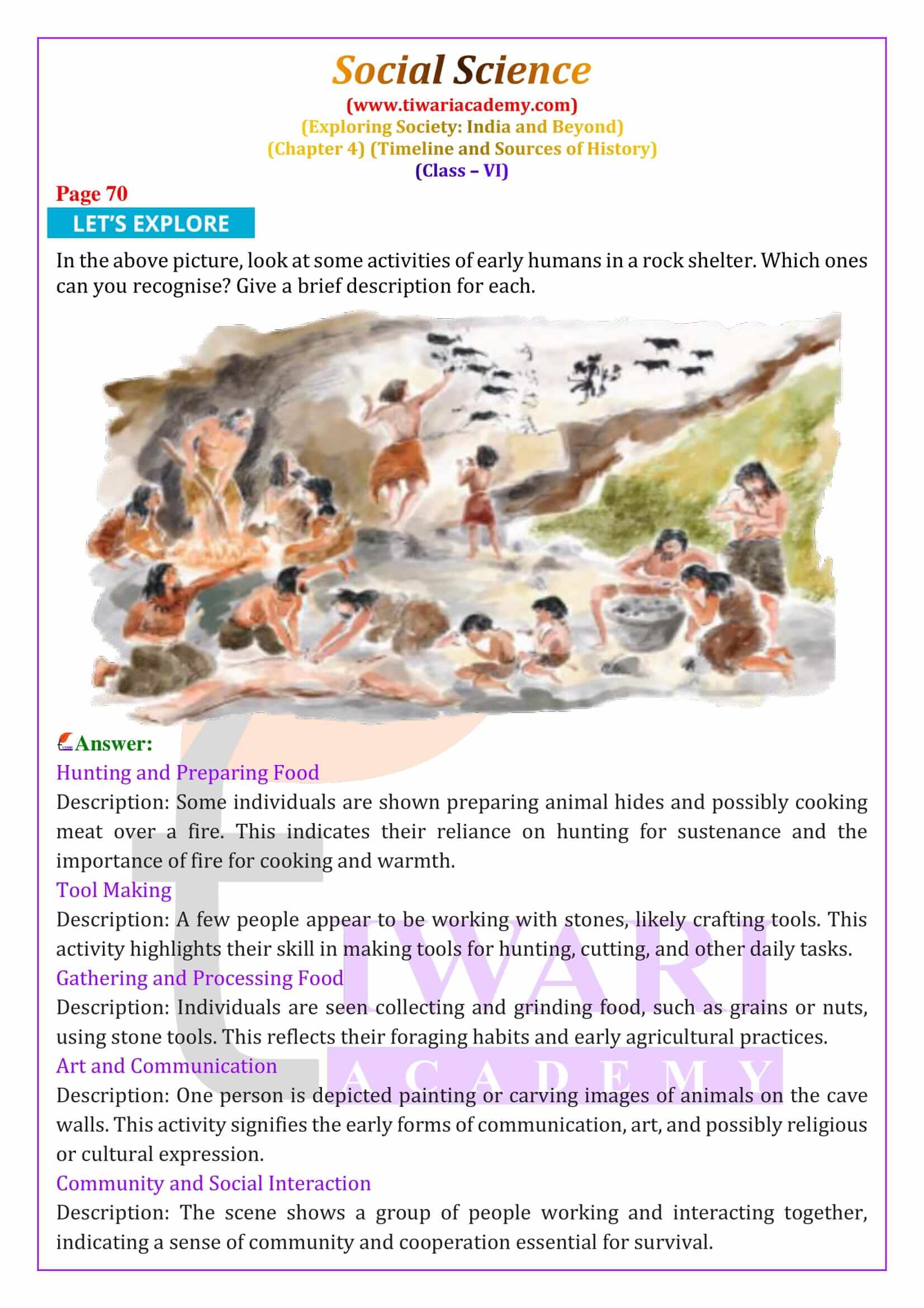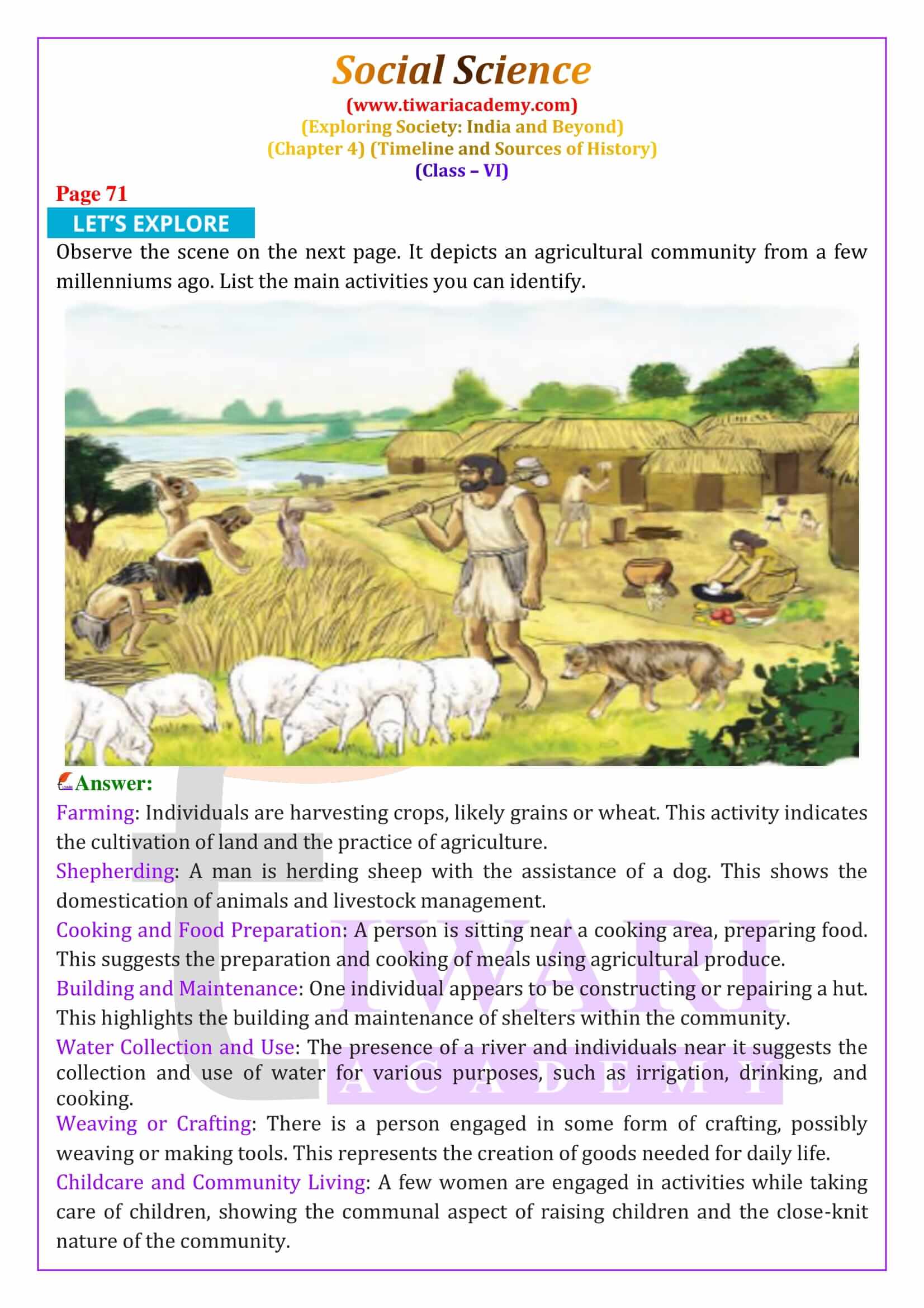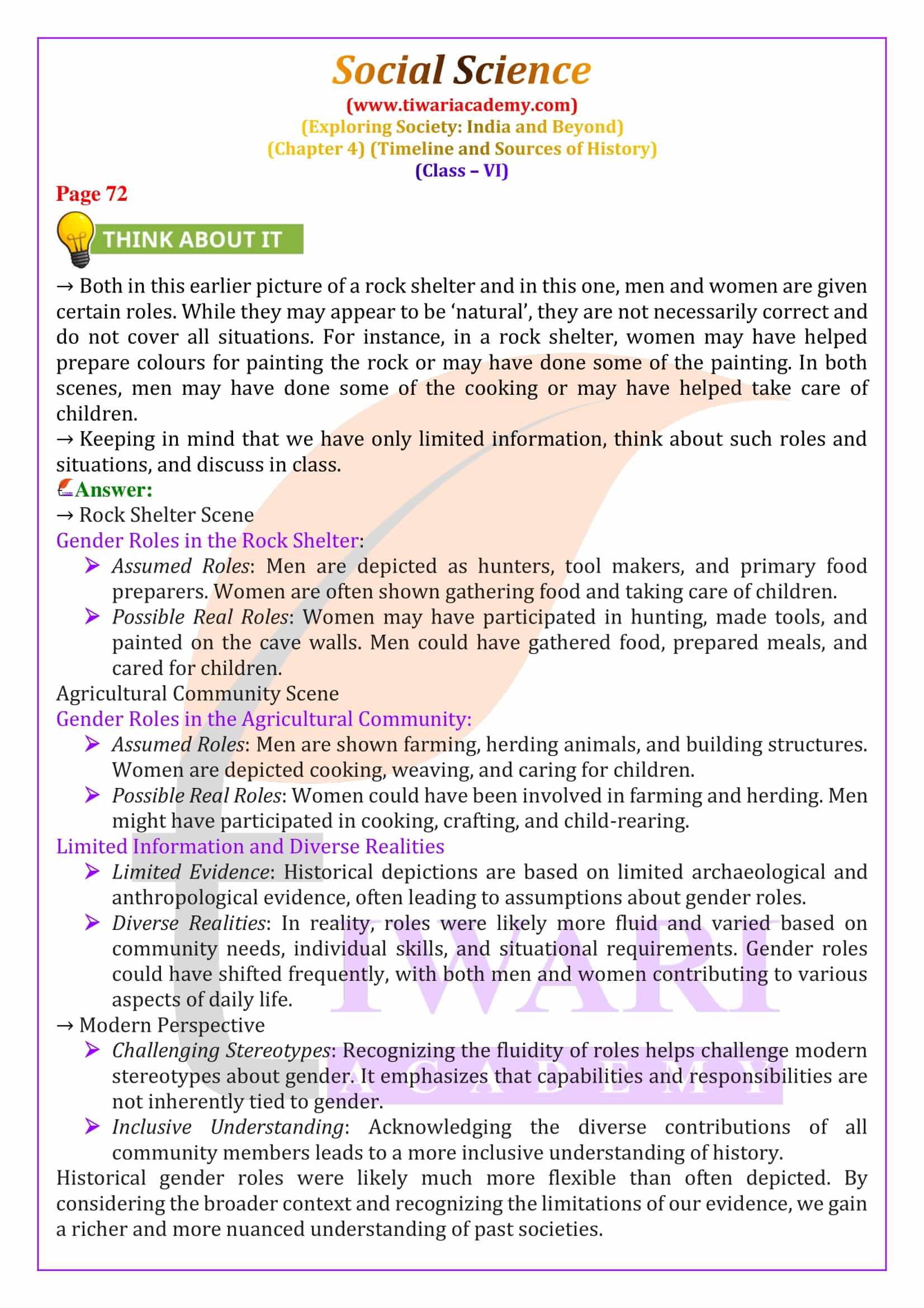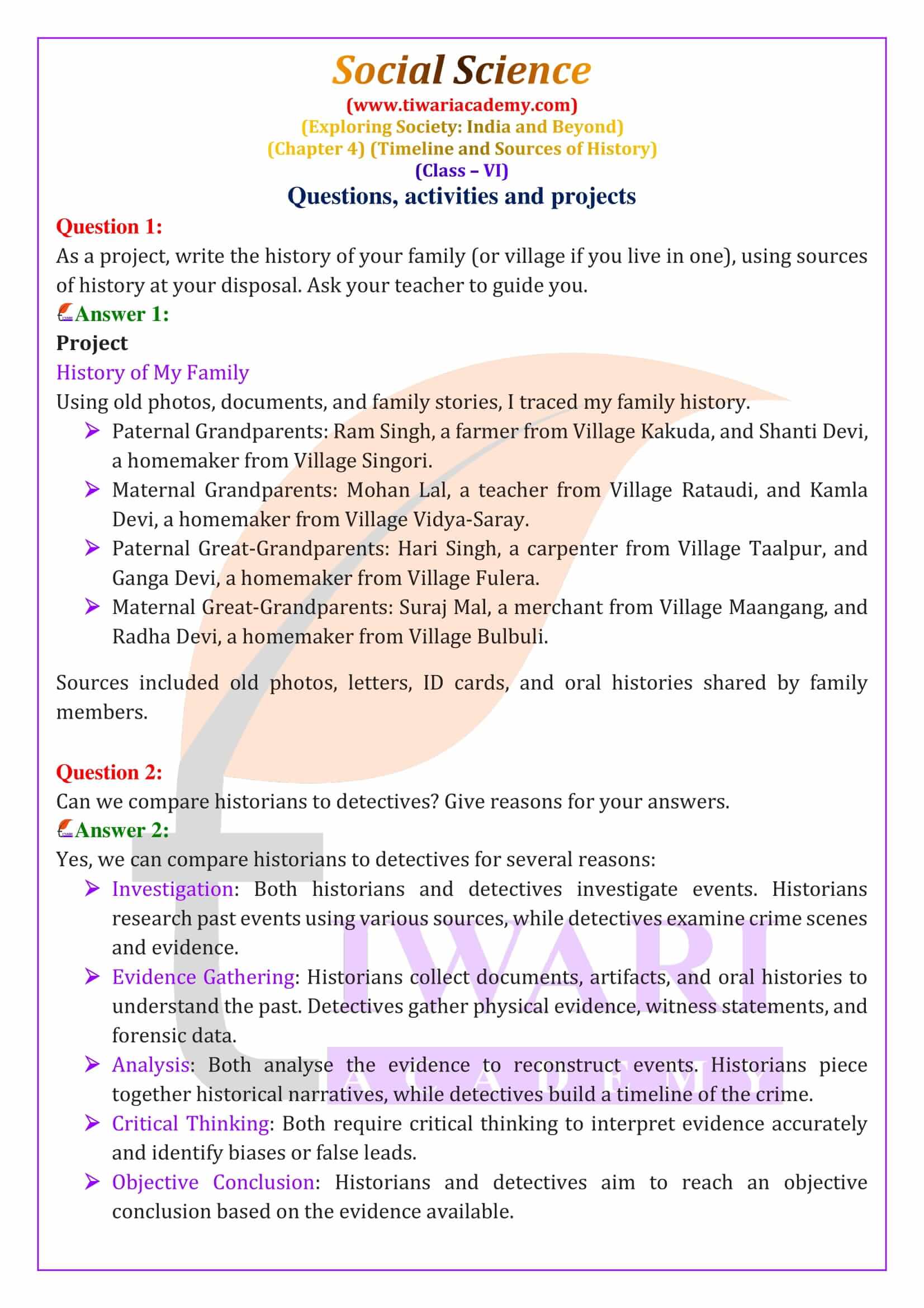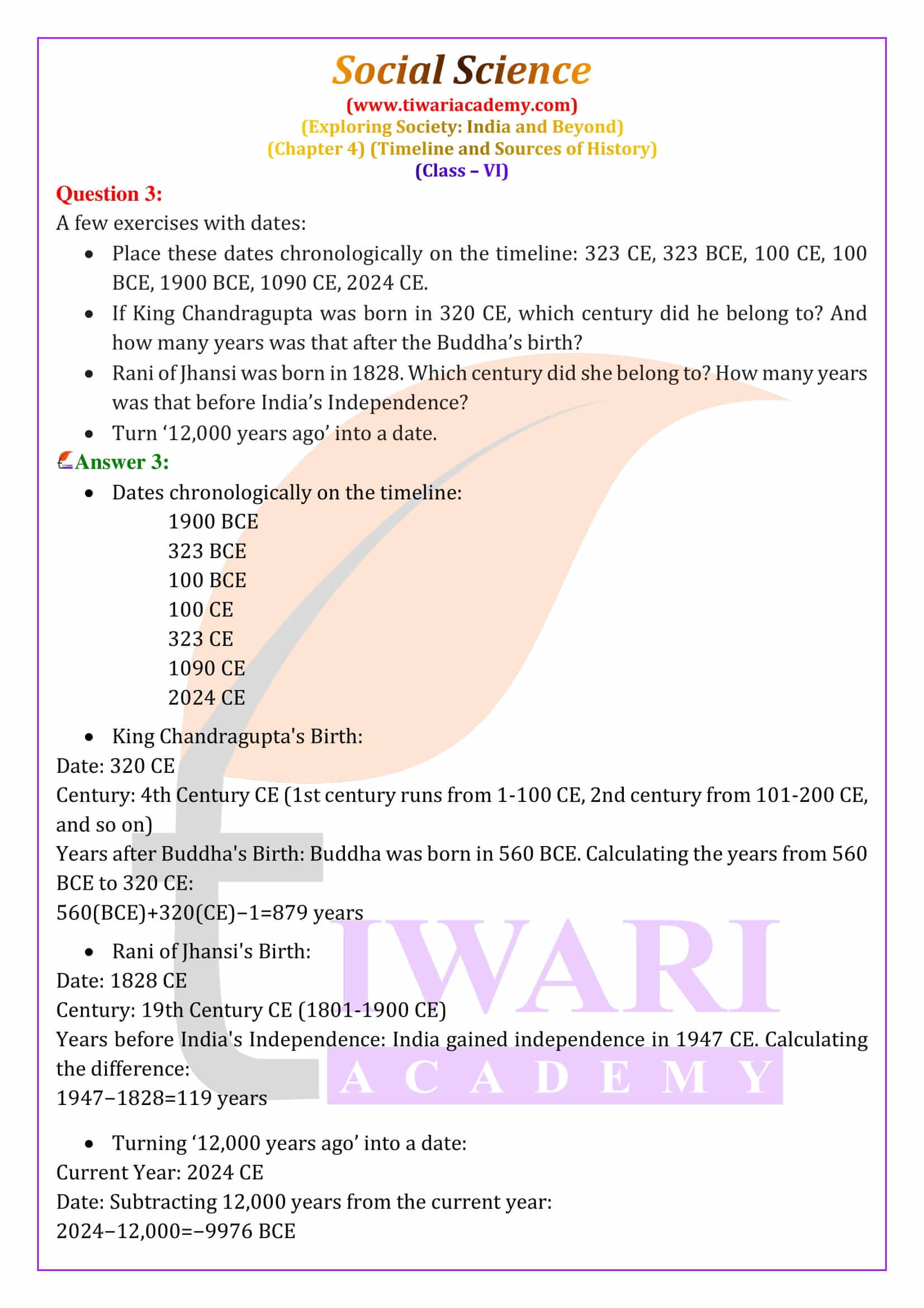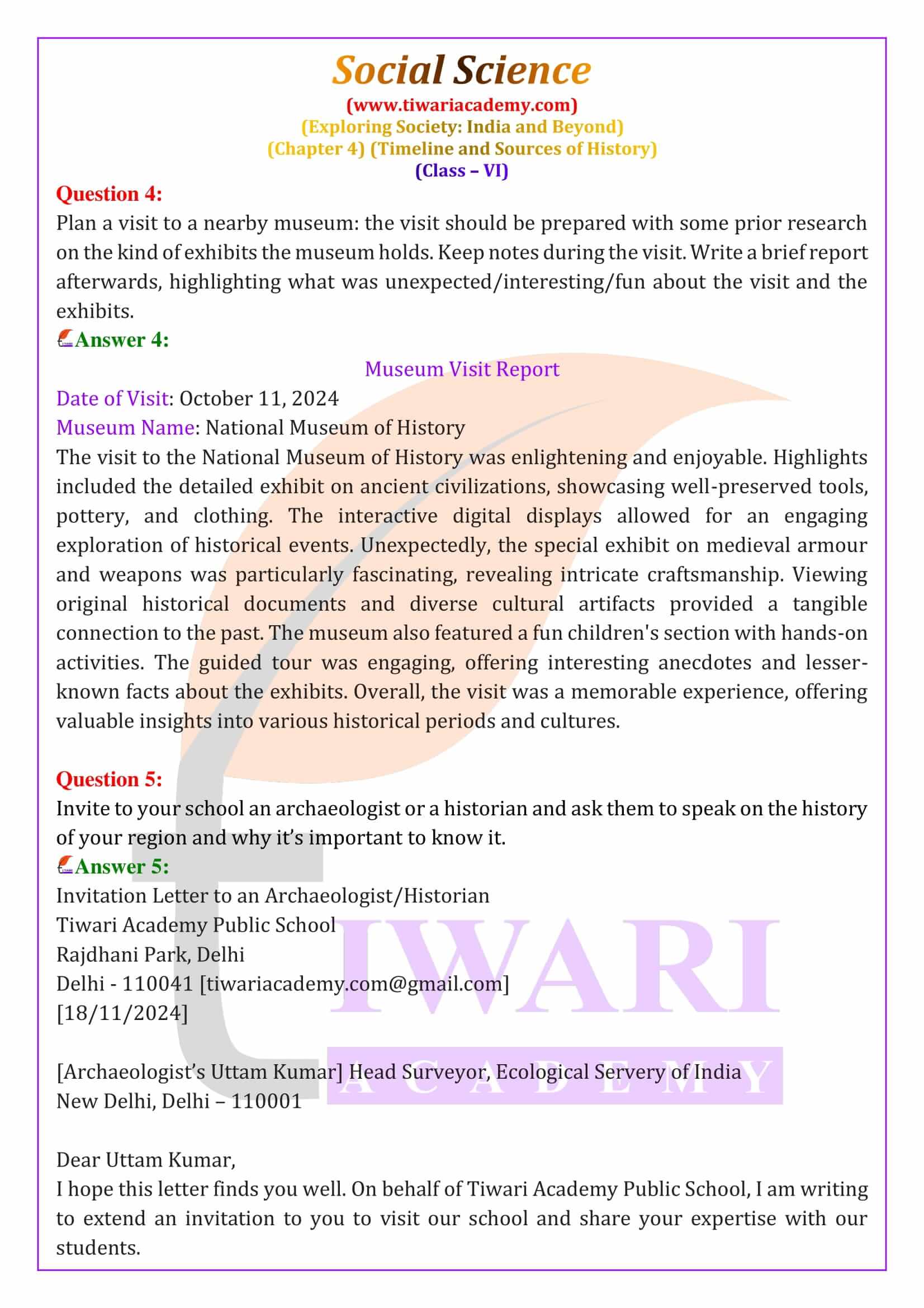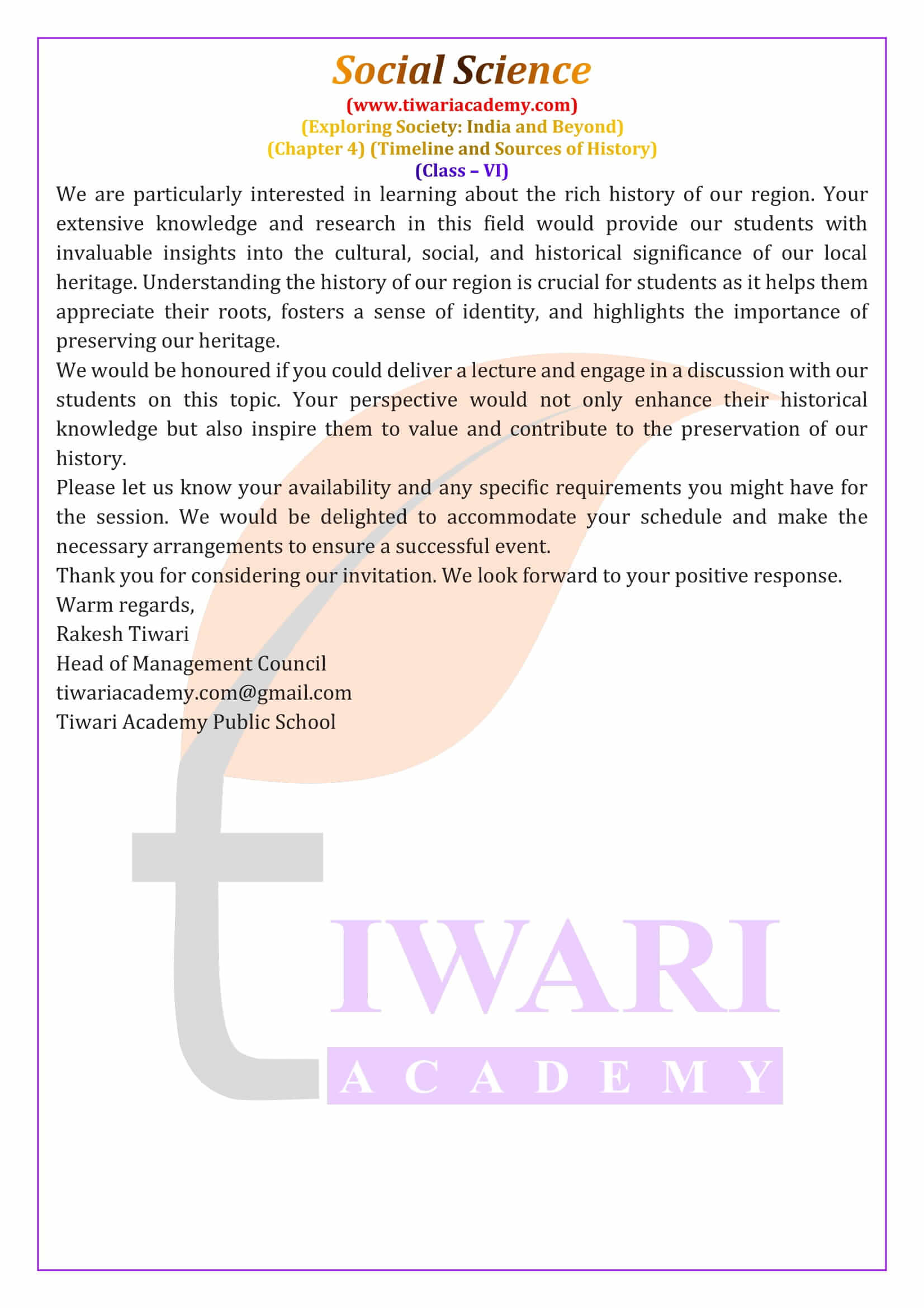NCERT Solutions for Class 6 Social Science Chapter 4 Timeline and Sources of History updated for academic year 2025-26. Class 6 Social Science Chapter 4 Exploring Society – India and Beyond India Beyond in History Section are solved in simple format.
Class 6 Social Science Chapter 4 Timeline and Sources of History Question Answers
Historical Time and Its Importance
History is like a conversation between the present and the past, helping us understand the world today by looking at what happened before. To study history, we need to know how to measure time. Different societies have used various methods to mark important events, such as the birth of a famous person or the start of a king’s rule. Today, we mostly use the Gregorian calendar, which starts from the birth of Jesus Christ. Historians often use timelines to show the sequence of events and to help us see how one event leads to another.
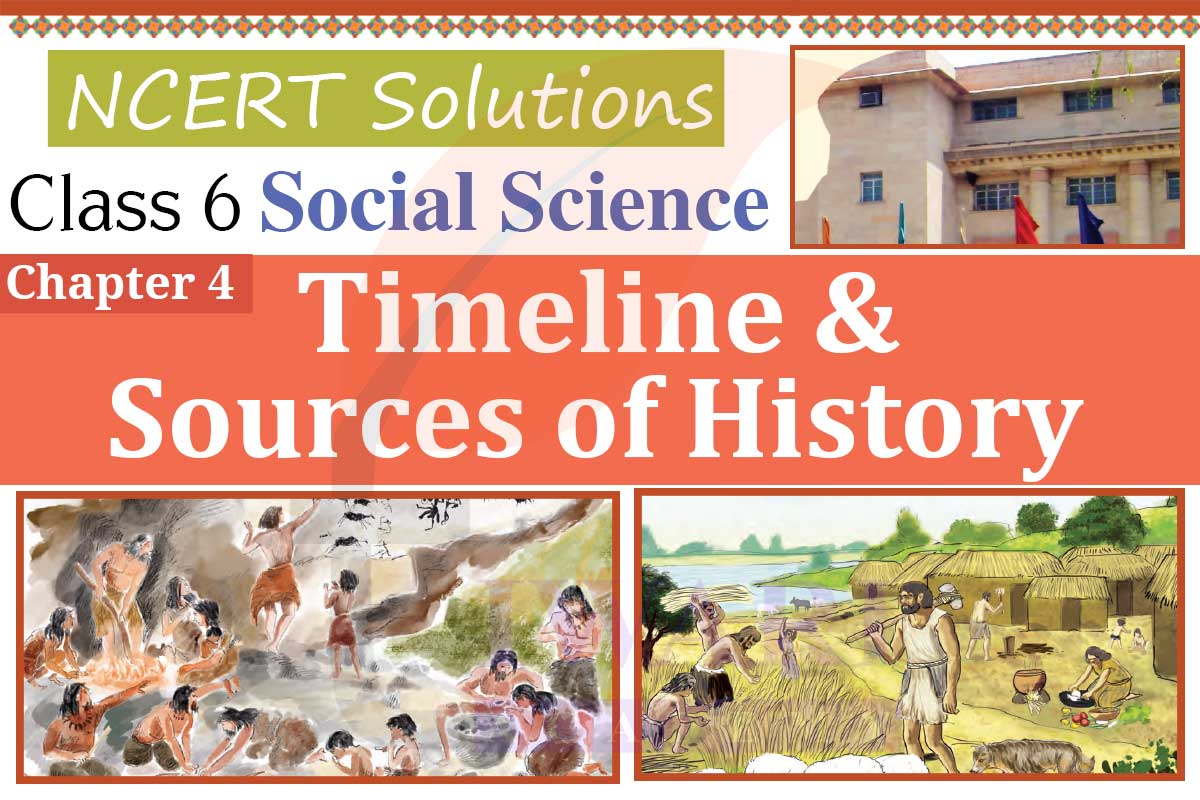
Measuring Time: Eras, Centuries, and Millenniums
In history, we measure time using eras, centuries, and millenniums. An era is a distinct period marked by an important event. For example, the Common Era (CE) begins with the birth of Jesus. Centuries are periods of 100 years, and we are currently in the 21st century, which started in 2001. A millennium is 1,000 years, and we are now in the 3rd millennium CE. Historians use these measurements to place events in a broader context, making it easier to understand how different periods relate to each other.
Sources of History: How We Learn About the Past
Historians use many different sources to learn about the past. These sources include objects like tools, coins, and pottery, as well as written documents like old books and inscriptions. Oral traditions, like stories passed down through generations, are also important. These sources are like pieces of a puzzle that historians put together to form a picture of what life was like in different times. Sometimes, the sources give clear information, but other times, they might be confusing or incomplete, making the historian’s job like that of a detective.
The Role of Archaeologists, Anthropologists, and Other Experts
To uncover history, historians rely on the work of various experts. Archaeologists dig up ancient remains like tools, pottery, and bones to learn about how people lived long ago. Anthropologists study human societies and cultures to understand how they have changed over time. Other experts, like epigraphists and paleontologists, also contribute by studying ancient writings and fossils. Together, they help historians piece together the story of human history, from the earliest times to the present.
The Early History of Humans
Modern humans have been around for about 300,000 years, which is just a tiny part of the Earth’s long history. Early humans lived in groups and were mainly hunters and gatherers, relying on nature for food and shelter. They used simple tools and fire, and they created art, like rock paintings, that show scenes from their daily lives. These early humans also had beliefs about nature and the afterlife. Over time, they learned to make ornaments and exchanged goods with other groups, laying the foundation for more complex societies.
The Development of Agriculture and Settlements
As the Earth’s climate changed, especially after the last Ice Age, humans began to settle down and grow crops. This led to the development of agriculture and the domestication of animals. With more reliable sources of food, communities grew larger and more settled. They often lived near rivers, where the soil was fertile, making it easier to grow crops. These early agricultural societies laid the groundwork for the first villages and towns, where people started to exchange goods and develop new technologies like pottery and metalworking.
The Growth of Complex Societies and the Road to Civilization
As villages grew into towns, human societies became more complex. Leaders or chieftains emerged, responsible for the well-being of the community. People worked together to farm the land and produce goods, leading to the development of trade networks. New technologies, like pottery and the use of metals, helped these societies thrive. Over time, some of these towns grew into the first cities, marking the beginning of what we call civilization. This progress was not easy, and early humans had to overcome many challenges, but their efforts laid the foundation for the modern world.

